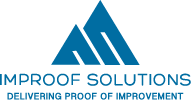Lean applied to running a marathon

One of my adolescent dreams was to run a marathon. I have been running since I was twelve but never crossed the line of 21km. Until July of this year. Running a marathon was also a big a mystery for me. How in heaven could anybody maintain a running rhythm so long? I could not imagine how to get it done. At one point a friend stimulated me to join the longest and funniest marathon in the world: Médoc. And so I decided to go for it. At the end of the article there IS a link to Lean… so continue reading and… don’t give up!
I set myself a personal goal. It was 29 May and my goal was to finish the marathon on 10 September. I didn’t focus on a fast time, just a training schedule to finish between 4:00 and 4:30 hours.
The next thing I needed was knowledge and a plan. To get some knowledge, I met a seasoned marathon runner. I learned running a marathon is all about 4 training sessions per week. Running needs to be slow and sessions equally spread. Next I needed a schedule. I downloaded a running app on my smartphone that did the job.
I started. One month down the training, the app suggested running 23 km. It was a warm day and the effort was hard. Both mentally to resist the temptation to stop, but also my body felt extremely tired. I wondered how I was ever going to get beyond that.
That day I realised that 90% of a marathon is mental, the other 50% is physical. Running a marathon requires patience, a can do attitude and the mental strength to relax when your body is working hard. I had learned meditation years before and that helped.
I realised I had taken weight in recent years and it was not helping me. I thought, loosing weight would make it easier and so I scheduled three weeks of dieting, skipped alcohol and sugar and also carbs in the evenings. It worked. The lighter I became the easier the longer distances.
On 10 September 2016 I finished my first marathon in 5h20min
Now what does this have to do with Lean? Many things.
First, if I did not have the dream or vision to run a marathon, I would never have tried. Unlike that dream I was not sure if I would make it ever. This is how many Lean initiatives start, big or small.
I would never have made it either without a plan, learning about myself, solving problems on the way, eliminating my obstacles weight and knowledge.
Reaching my goal would never have happened without testing, or call it training.
My training allowed me to develop a standard routine for how to run long distances, including rehydrating and keeping my energy levels up. It was training, repeating the standard, and improving the standard that helped me finish.
Mentally the support from many friends and my belief that I could relax my mind beyond 30km were critical.
In Lean terminology I completed a whole PDCA problem solving cycle. At the start I was not sure I could get there, on the way I improved. In the end I made it.
Of course my physical condition also helped. Anybody wanting to run a marathon should check up with a doctor first. Call this the baseline assessment J
Imagine you lead an industrial printing plant and you have the vision to switch from analogue to digital printing.
This journey could be similar to my marathon story: Get in a can-do mindset, surround yourself with an expert, make a standard and do a test run, learn from the experience, do more test runs, improve the standard, surround yourself with more people that buy in to the change, do even more test runs, and finally make the switch.
Next week we’ll talk about: autonomous problem solving
By Christof Frenay, Managing Partner at Improof Solutions

